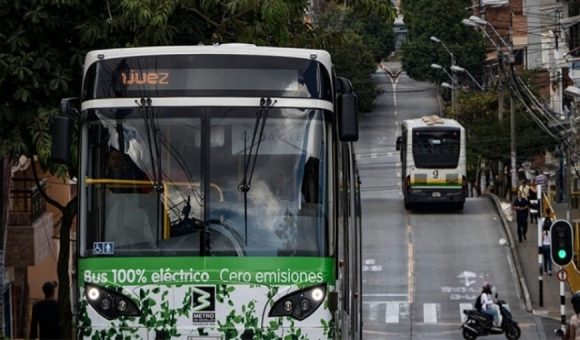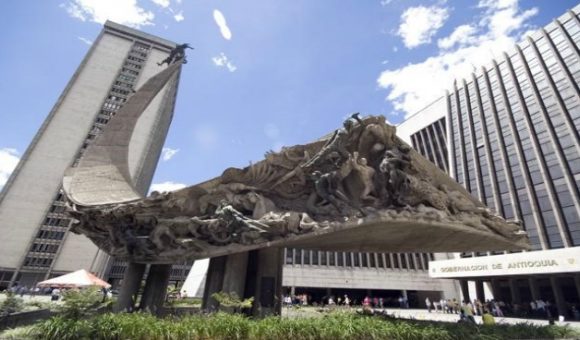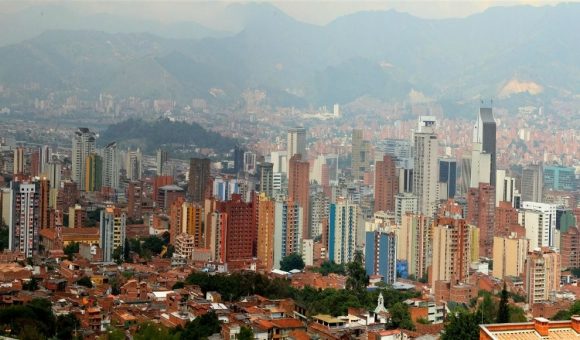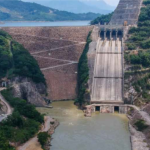Update: EPM Reveals Assumptions About Hidroituango Financial-Recuperation Plan

Medellin-based multinational electric-power giant EPM on September 9 revealed in a presentation to the Medellin City Council key financial assumptions about its proposed sale of assets and other measures to cover losses arising from the Hidroituango hydroelectric project diversion-tunnel collapse.
“Among other issues, we highlight that in the case of the Hidroituango hydroelectric project, we assume that the equipment currently in the mechanical room could have suffered some damage [resulting from diversion of Cauca River water through that room], although to date we lack exact information on possible damage,” according to EPM.
To recoup losses, EPM proposes to raise about COP$7 trillion (US$2.27 billion) from asset sales, internal cost reductions and postponement of some capital projects over the next three years.
Among key assumptions to this financial-recuperation plan:
1. Hidroituango would produce its first 300 megawatts (MW) of power in December 2021, with the remaining 2.1-gigawatts of the total 2.4-gigawatts of capacity entering into service at some yet-to-be-determined dates.
2. EPM possibly would net COP$1.2 trillion (US$389 million) in insurance payoffs for infrastructure damage plus another possible COP$1.3 trillion (US$422 million) for loss-of-power sales that had been expected between 2018 and 2021 – all resulting from the diversion-tunnel collapse and subsequent postponement of power sales.
3. Total Hidroituango project costs are now estimated at COP$14 trillion (US$4.5 billion), of which COP$2.5 trillion (US$811 million) corresponds to financial costs.
4. Costs to compensate populations affected by the temporary emergency (following the diversion-tunnel collapse and subsequent measures to relocate threatened downstream populations) are estimated at COP$600 billion (US$195 million), including costs likely to be incurred in 2018, 2019, 2020 and 2021.
5. Costs for installing transmission power lines are estimated at COP$120 billion (US$39 million).
6. Equipment down-time costs are estimated at COP$338 billion (US$109 million) in 2019.
7. Colombian national power prices are seen declining from 2021 to 2026, after Hidroituango comes back on-line.
8. Thermal power generators in Colombia are assumed to burn imported liquefied natural gas (LNG) rather than fuel-oil or domestic gas during the three-year delay in power output from Hidroituango.
9. EPM investments in drinking-water infrastructure in Colombia would continue as normal from 2015 to 2025, with current tariff structures unchanged until 2026.
10. Another 370,000 water customers would be added to EPM’s Colombia network through 2025.
11. The “Emvarias” trash-collection transfer station near Medellin would begin operations in 2021.
12. EPM would sell its Chilean water and power utilities and its 10% stake in Colombian power transmission giant ISA during 2019.
13. EPM wouldn’t lose access to financial markets to cover its debt needs.
14. EPM’s gross income would dip to COP$16.5 trillion (US$5.3 billion) in 2019, down from the COP$18.2 trillion (US$5.9 billion) initially foreseen (prior to the diversion-tunnel collapse and subsequent delay in power sales from Hidroituango). Through 2030, that initial loss of power sales (which would have started in December 2018) continues to penalize total expected revenues each year, hitting COP$27.8 trillion (US$9 billion) in 2030 – down from an expected COP$31.9 trillion (US$10 billion) in 2030, the difference explained by the tunnel-collapse financial impacts.
15. Earnings before interest, taxes, depreciation and amortization (EBITDA) also take hits in most years from 2019 through 2030, although EBITDA should spike to around COP$8.8 trillion (US$2.8 billion) in 2021, EPM estimates.
16. EPM’s annual payments to the city of Medellin (its 100% shareholder) from power sales will fall in 2019, 2020 and 2021 — compared to 2018 — but payments then rebound and rise from 2022 onward, hitting COP$2.1 trillion (US$681 million) in 2030.
Asset-Sales Details
In an earlier, September 3 press conference, EPM general manager Jorge Londoño de la Cuesta revealed that the Medellin City Council could decide whether to approve the sale of EPM’s 10% stake in power transmitter ISA and Chilean utility assets by early October.
“The sooner the better,” Londoño added, as a quick sale would overcome current market anxieties about EPM’s financial position as a result of losing an estimated COP$6 trillion (US$1.97 billion) to COP$7 trillion (US$2.3 billion) from the Hidroituango hydroelectric-dam project problems.
“We’re confident and optimistic that [the Council] will approve this in the next few weeks,” he added.
Most of the estimated revenue losses from Hidroituango problems come from an estimated three-year delay in electric power sales (COP$4 billion/US$1.3 billion), Londoño said.
The remaining losses include an estimated COP$1.5 trillion (US$492 million) to COP$2 trillion (US$656 million) in related dam-infrastructure repair costs, plus an estimated COP$500 billion (US$164 million) to COP$1 trillion (US$328 million) for compensating temporarily affected populations around the hydroelectric dam.
EPM’s proposed sale of its 10% stake in electric power transmitter ISA is likely to net about COP$1.5 trillion (US$492 million) while the sale of its Chilean water and power utilities likely will generate more than COP$2 trillion (US$656 million), he estimated.
Hence it’s possible that the entire COP$4 billion (US$1.3 billion) in lost electricity sales can be recouped by just those two asset sales, without affecting any core EPM businesses, he estimated.
In addition, EPM aims to delay about COP$2 trillion (US$656 million) of the total COP$14 trillion (US$4.6 billion) in planned infrastructure investments over the next few years. Those delays won’t significantly hurt EPM’s future power, water and sewer services, nor have any impact on current EPM customers. What’s more, these postponements won’t impede achievement of regulatory service standards, he emphasized.
In addition, to generate more savings, EPM expects to trim about COP$500 billion (US$164 million) to COP$1 trillion (US$328 million) in internal costs including cutbacks in various sponsorships and short-term contract labor over the next three years, he said.
As a result, the roughly COP$4 trillion (US$1.3 billion) gained from asset sales, plus the COP$2 trillion (US$656 million) n infrastructure investment delays, plus the up-to-COP$1 trillion (US$328 million) in internal-cost cutbacks would deliver about COP$7 trillion (US$2.3 billion ) in additional revenues – enough to cover all the expected Hidroituango losses and simultaneously ensure that the City of Medellin continues to receive its hefty annual share of EPM profits, he said.
EPM’s payments to the city (EPM’s 100% owner) currently run at about COP$4 trillion (US$1.3 billion), or about 25% of Medellin’s total annual city budget.
While EPM’s full-year 2018 earnings before interest, taxes, depreciation and amortization (EBITDA) won’t be hurt by Hidroituango costs this year, future EBITDA likely would be trimmed somewhat, although Londoño didn’t offer any estimate of the total impact.
As for when EPM will shutter the tunnel that currently diverts Cauca River water through the machine room (necessitated by the diversion-tunnel collapse last April), this decision depends on relative rainfall over the next months. Higher rainfall around the Cauca River basin means greater Cauca River flow, while lower relative rainfall cuts river flow, he explained.
EPM aims to reduce the time it takes between shuttering the machine-room tunnel — with a consequent rise of water-level behind the dam – and the subsequent, eventual flow of water over the engineered spillway at the top of the dam. Cutting this time-gap to a minimum number of days will mean less impact on downstream populations that depend upon some constant minimal water flow of the river, he added.
















